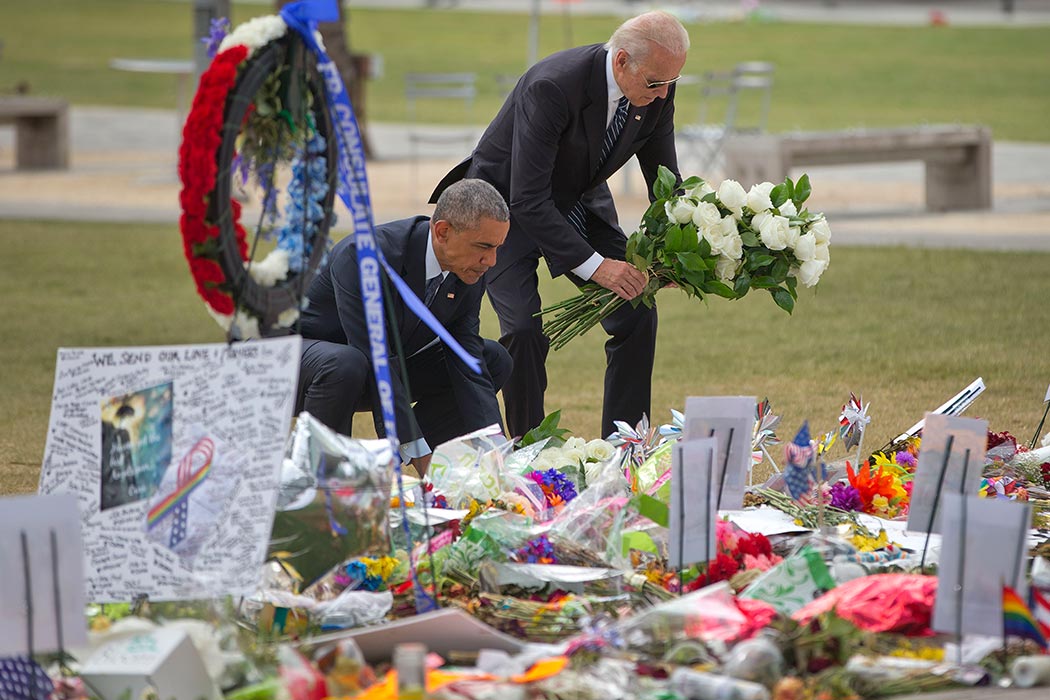In the wake of the massacre in Orlando, Florida, survivors, family members, and strangers have come together to mourn these sudden and tragic deaths on national, personal, and individual levels. Through artwork, “grief projects,” make-shift memorials, tributes, ribbons, hashtags, and virtual altars via social media, we as a nation are mourning in complicated and rich ways.
After the shootings at Columbine High School in Littleton, Colorado, Jonathan D. Fast analyzed the ways in which people mourn sudden deaths through the creation of art projects and the use of complex symbols.
Fast’s study is particularly relevant because he attempted “to increase our understanding of how people respond to multiple sudden deaths.” First, he notes the differences between mourning a singular, anticipated death versus more large-scale, sudden deaths saying that the latter produces mourners at different levels—whether national, community, individual, and direct family and friends.
Multiple forms of grieving followed Columbine. At the national level, approximately 70,000 people gathered for a memorial service conducted by the Vice President and General Colin Powell. During this ceremony, the Air Force flew planes above in the “‘missing man’ formation” while the Colorado governor read the names of the 13 victims killed in the shootings. With each of these names a white dove was released into the sky, symbolizing peace, souls’ ascension to heaven, and the name of the school itself: “Columbine” derives from the Latin word for “dove-like.”
Another way in which the killings were mourned publicly occurred in the form of national policy making, as multiple crime and gun bills passed through the senate. “The passage of such legislation, in the wake of a tragedy such as this, is the nation’s way of acknowledging that the deaths of the children have not been in vain,” Fast notes.
Today, we are already seeing some of this public morning and policy making taking place at the national level. President Obama ordered that flags be flown at half-staff for the five days following the shooting. And in the House of Representatives, a moment of silence was shared to honor the victims, though some Democrats chose to boycott the moment of silence or erupt in shouting immediately following it, because they wanted more action towards gun reform rather than another inactive moment of silence. On the policy-making front, U.S. Democratic Senator Chris Murphy made headlines by taking to the Senate floor for a 14-hour filibuster demanding action on gun control. Various groups have also started petitions and lobbies for gun reform, such as Gavin Newsom’s gun safety initiative and Everytown’s petition, that are circling through social media circles now.
Fast described how family and friends of the Columbine shooting victims transformed items of the deceased into make-shift shrines. Cars were often decorated with flowers, messages, notes, and balloons. Crosses were put up on a Littleton hillside; blue and white ribbons were worn in solidarity; memorial websites were built and linked for each victim of the shootings. In using traditional symbols (like the cross), local symbols (like the Columbine flower), and derived symbols (like the looped ribbon), Littleton residents continued to explore their grief and despair in the aftermath of such a violent tragedy. Fast explains “[d]erived symbols link mourners with past communities of bereavement, and may in time become the foundations for new traditions required by new types of tragedies.”
Weekly Digest
In Orlando, the national, community, and personal grieving processes are still taking different forms. People have compiled vigil sites and memorial events occurring in Florida, in hopes of simply helping those who are looking for ways to mourn and grieve. Others have come up with creative ways to use makeup and social media to wear and share their support. For the Tony Awards, which aired the night after the deadly Orlando massacre, the show’s costume designers fashioned a translucent silver ribbon to show solidarity with the families and victims.
Carolyn Lunsford Mears, a Ph.D. and a parent of a child who was at Columbine at the time of the attack, conducted research on grieving parents and the healing process after sudden, tragic deaths. Over the process of her interviews, she pieced together the words of Columbine parents to create a “final narrative” poem. Here is an excerpt:
“Need a Memorial for the lost
For the living too
Those who survived
Have to live with it …
If it could happen here
It could happen anywhere.”







